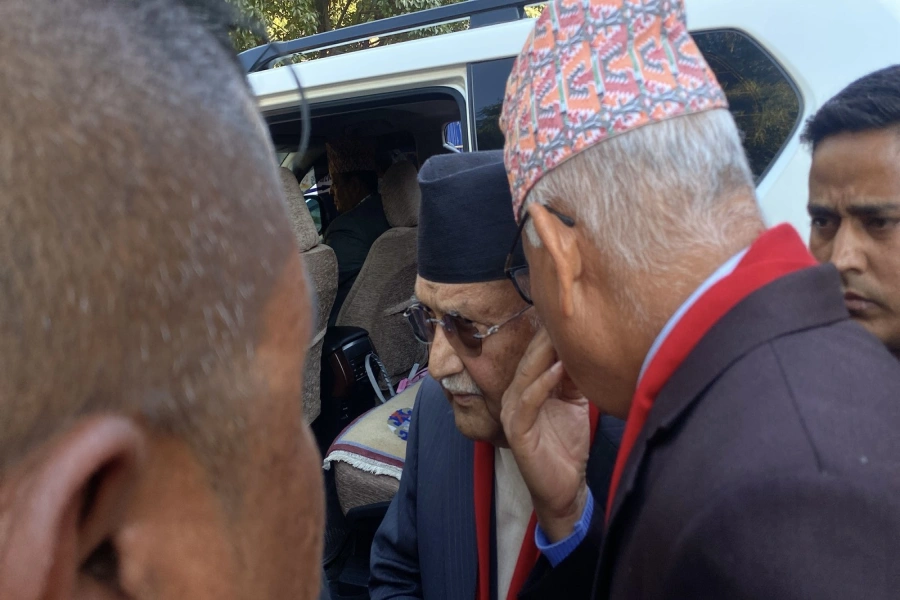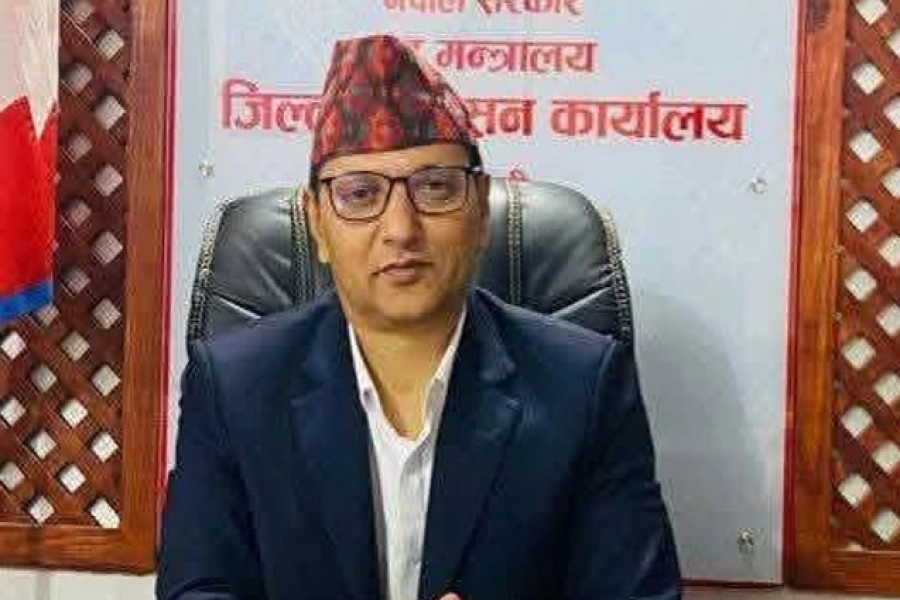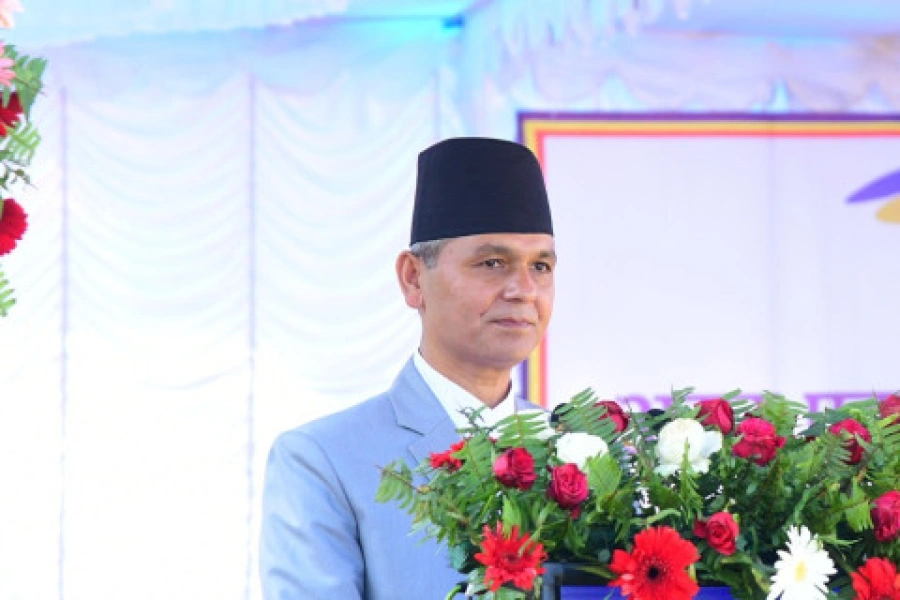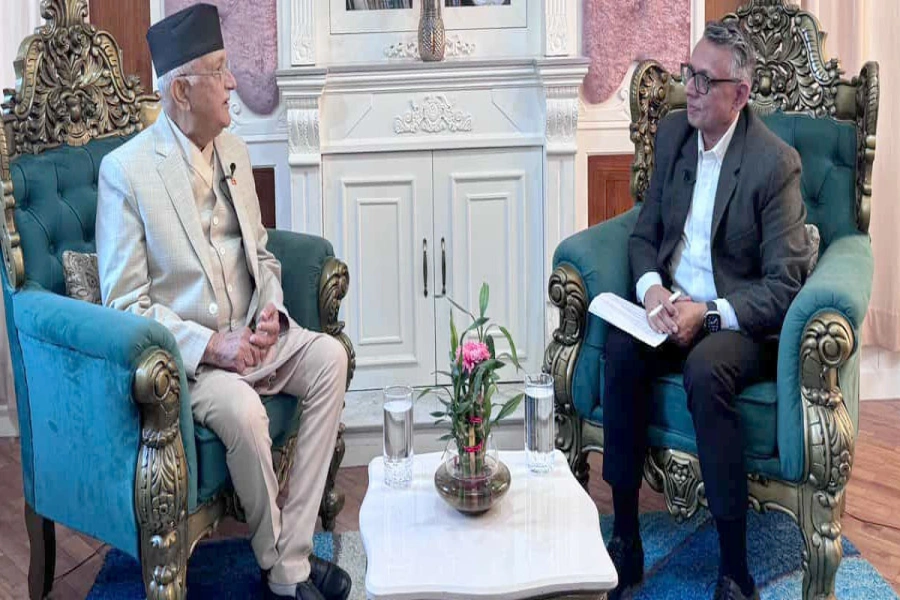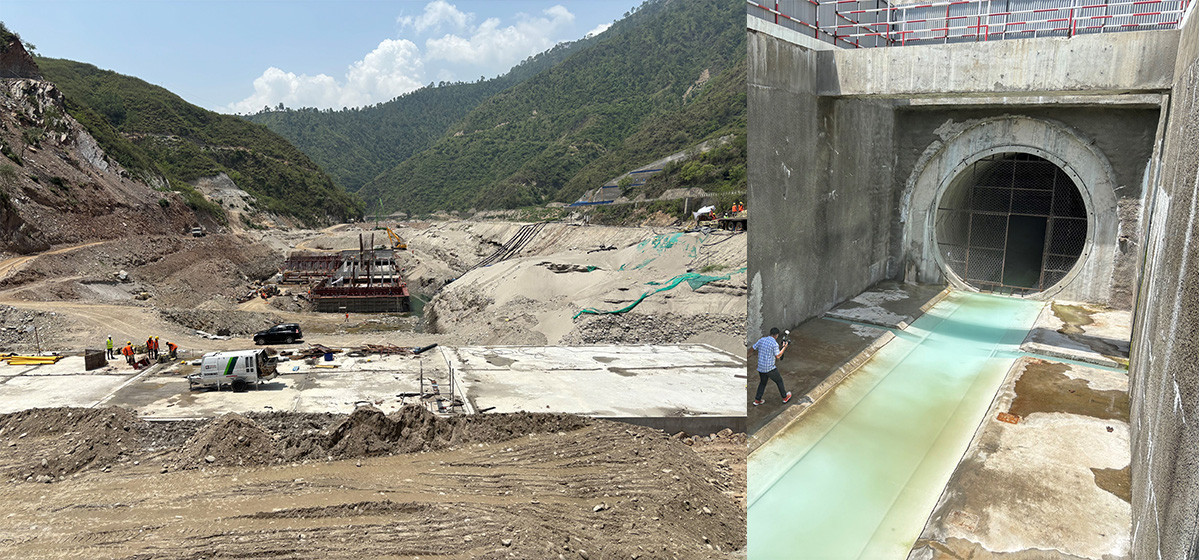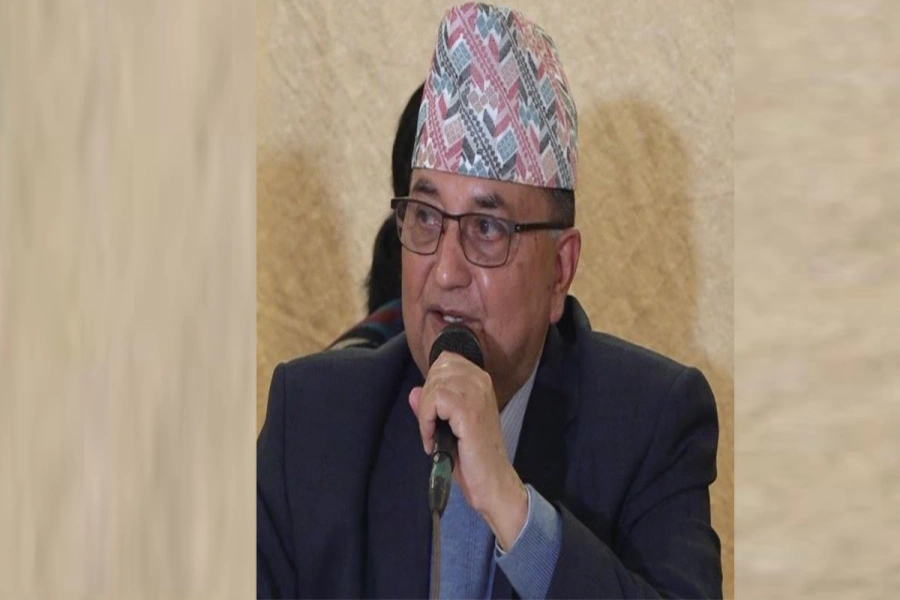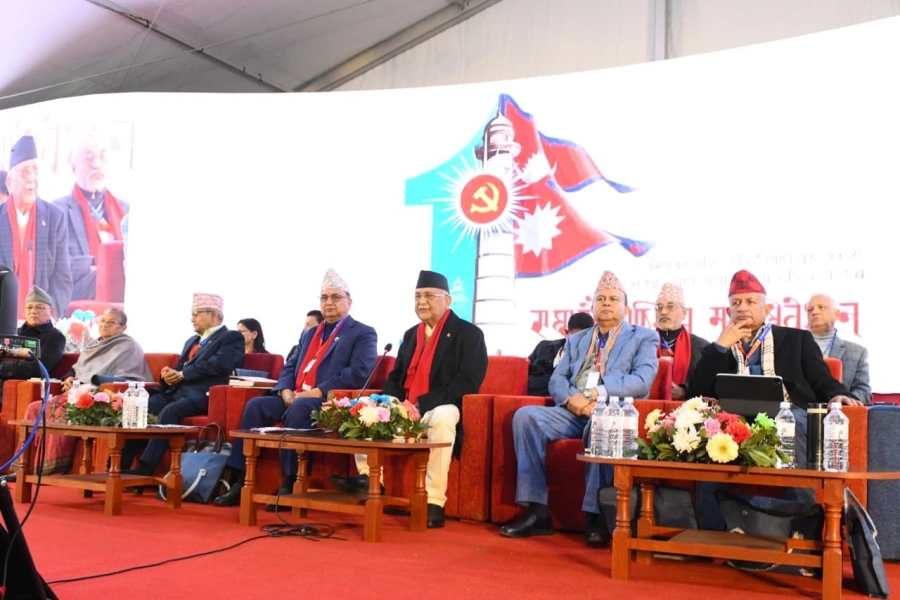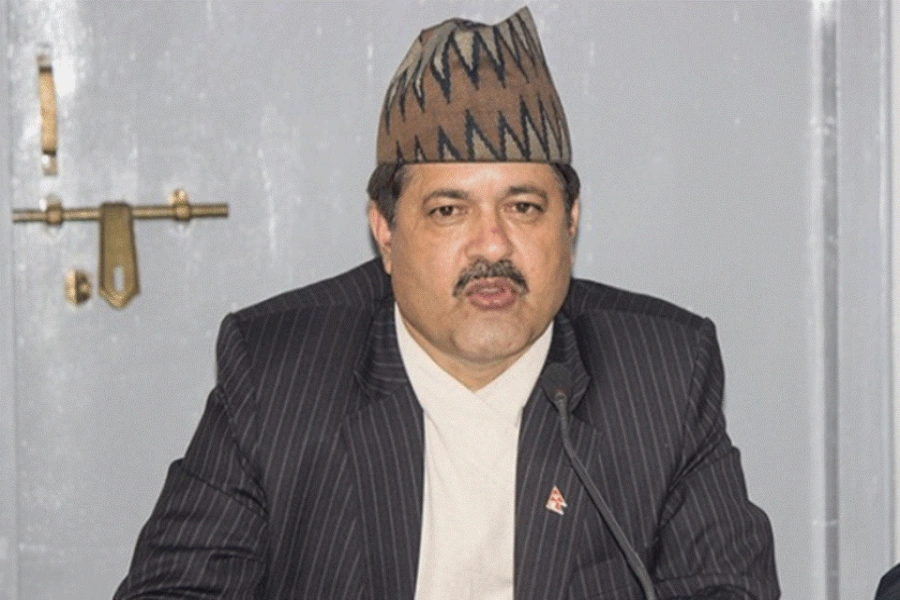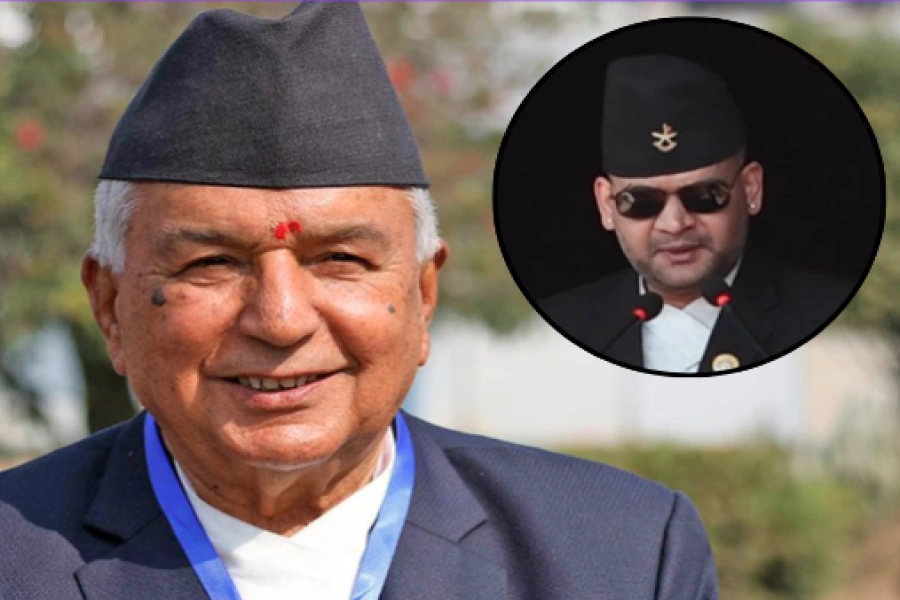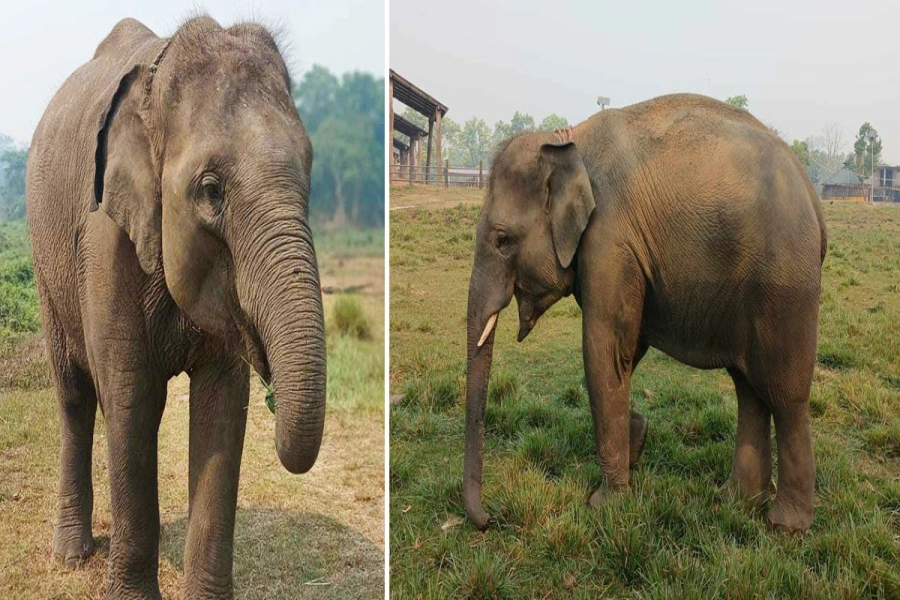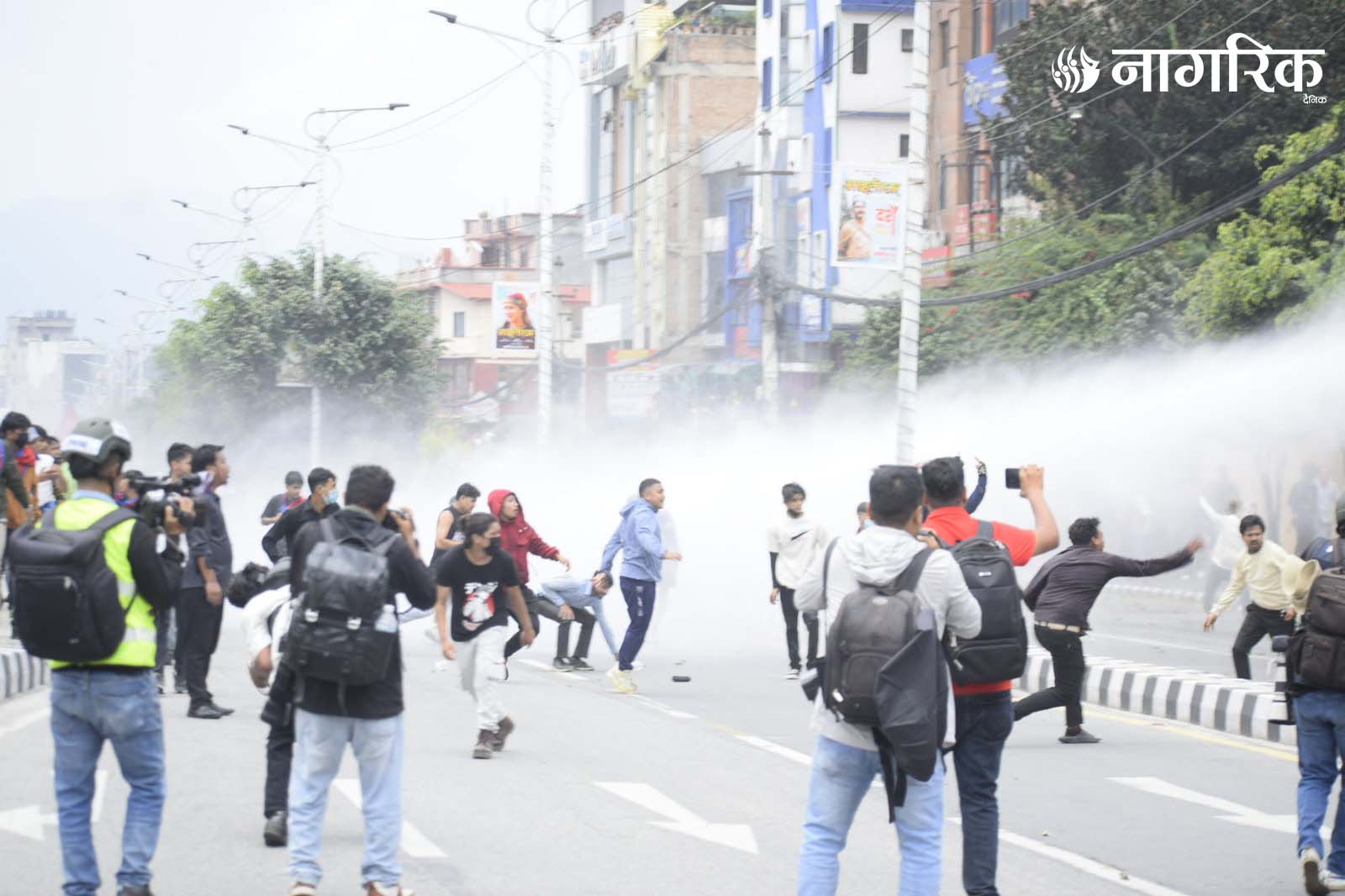Nepal, celebrated as the birthplace of Yoga, finds itself at a crossroads as this ancient practice becomes increasingly commercialized. The surge in international tourists drawn to Yoga retreats and teacher training programs has undoubtedly bolstered the economy, but it has also sparked concerns about the erosion of Yoga's spiritual and cultural essence. The evolution of Yoga in Nepal reflects the demands of modern society. To establish itself as a global Yoga hub, Nepal must strike a delicate balance—honoring its spiritual roots while adapting to the realities of contemporary lifestyles and global trends.
Yoga, once deeply rooted in spiritual practice and mindfulness, has been overshadowed by commercialism in Nepal of late. As traditional Yoga retreats and studios proliferate in urban centers, indigenous essence is being diluted with an emphasis on asanas (postures) and aesthetics catering to market demands rather than organic teachings. Yoga is now stretched thin to selfies in thigh leggings by commercialization. While the practice remains deeply rooted in the country's spiritual traditions, particularly within Hinduism and Buddhism, the modern commercial landscape of Yoga has introduced new dynamics.
As international tourists flock to Nepal’s mountains for serene backdrops, insta-worthy poses, detox packages and luxury Yoga retreats, a practice once revered for its spiritual depth, questions arise: Has Yoga become just another commodity, catering to market demands? Or is it just a natural evolution of an ancient practice in a modern world?
Nepal has become an attractive destination for international Yoga tourists, drawn to the country’s serene environment, spiritual significance, and the mountains. The influx of tourists who seek wellness retreats, meditation and Yoga experiences has led to a rise in businesses offering Yoga-related services, ranging from short-term retreats to long-term teacher training programs. The International Yoga Day has been observed annually on June 21 since 2015, following the United Nations General Assembly (UNGA) decision in 2014. Indian Prime Minister Narendra Modi proposed this initiative during his address to the 69th UNGA, emphasizing the universal importance of Yoga. Nepal's then-Prime Minister Sushil Koirala was the first to support the proposal, which was later endorsed by 177 countries. Nepal, with its independent celebration of National Yoga Day, has emerged as a prominent tourist destination for Yoga enthusiasts.
“Yoga originated in Nepal, and international tourists are eager to learn Yoga here, believing they will have an authentic experience at its source,” said Rupak Khadka, founder of Ashtanga Yoga Thamel. “Globally, Yoga has evolved from its original form-‘Yog’-and, in some cases, its essence has been wholly compromised. Practices like naked Yoga, acrobatic Yoga, and goat Yoga have emerged. However, in Nepal, Yoga remains true to its roots, making it an ideal destination for those seeking authentic experience. Different kinds of Yoga suit different individuals, and to grasp its holistic nature, one should visit Nepal.”
Yogi Rupak Khadka, Founder of Ashtanga Yoga Thamel
Khadka emphasized the importance of preserving Yoga’s originality. “The government must monitor and regulate those creating their own styles of Yoga. While no one should have the authority to distort Yoga, it is also true that practices from thousands of years ago may not fully align with the modern world. Positive adaptations can conserve Yoga without harming its original essence.”
He also addressed the growing connections between Yoga and other fields. “Yoga is crucial in every aspect of life: tourism, sports, corporate wellness, and culture. However, its nature must remain intact. Incorporating new research is vital to prevent destructive trends.”
Commercialization of Yoga: Boon or Bane?
Guru Lab Dev Mishra, Patanjali Nepal
“Yoga has become a necessity for everyone, embraced as a way of life by people from all walks of life in Nepal, whether rich, middle class, or those struggling with illness. Yoga holds equal importance for all these groups. Patanjali Nepal advocates that individuals who have the means to cure diseases and are healthy should practice yoga themselves and voluntarily teach it to those who cannot afford it, rather than turning it into a business. Yoga cannot be quantified with money, it is priceless,” Guru Lab Dev Mishra, Nepal chief of Patanjali Yog Samiti Nepal told Republica.
“In Nepal, yoga has seen minimal commercialization in some urban markets. However, Patanjali's perspective emphasizes that yoga should remain service-oriented. Socially, individuals should integrate yoga into their daily lives as a form of social service. As a spiritual nation, Nepal has the potential to spread spirituality to every corner, fostering spiritual awakening and encouraging individuals to serve humanity through its principles,” Guru Lab Dev added.
Yoga has transformed from a sacred practice into a global, profit-driven enterprise, fueled by its surging popularity, becoming a mainstream fitness trend. Yoga studios, retreats, and teacher training programs are available worldwide, making the practice more accessible. However, the accessibility has also turned Yoga into a fashion statement, overshadowing its spiritual roots.
Yoga is evolving into a highly lucrative business. Premium studios charge exorbitant fees for classes, retreats and training programs. In destinations like Dhampus and Ranikot village, Yoga retreats are promoted as luxury escapes, with some costing as much as $985 per person. Instead of being a sincere commitment to learning and practicing Yoga, it has often become more about what looks enticing on social media.
Many young people, particularly in urban and globalized contexts, view Yoga as a means to improve physical illness, reduce stress and maintain overall wellness. They are more likely to engage with modern variations like power Yoga, hot Yoga or aerial Yoga that are influenced by social media trends.
Nowadays, corporate Yoga is also popular with group sessions, workshops and retreats and customized programs. It is for the busy employees who have limited time in their daily routine to achieve the minimum physical activity to combat the effects of a sedentary lifestyle. With corporate Yoga, employees can focus their minds, release body tension and relieve stress and anxiety with high concentration, undistracted focus, better performance and productivity toward company goals.
In a quest for yoga-land

After selecting a Yoga retreat or program, foreign participants travel to Nepal, where they typically need a tourist visa and make flight and accommodation arrangements. Upon arrival, they are welcomed by retreat representatives who provide an orientation on the schedule, location and cultural practices. Many retreats also offer excursions to spiritual sites such as Bauddhanath Stupa, Pashupatinath Temple and Lumbini.
Guru Chintamani Gautam, Chairman (Yogmandu Yoga), Director (Nepal Yoga Academy)
“Yoga has become a necessity for everyone, embraced as a way of life by people from all walks of life in Nepal, whether rich, middle class, or those struggling with illness. Yoga holds equal importance for all these groups. Patanjali Nepal advocates that individuals who have the means to cure diseases and are healthy should practice Yoga themselves and voluntarily teach it to those who cannot afford it, rather than turning it into a business. Yoga cannot be quantified with money, it is priceless,” Guru Lab Dev Mishra, Nepal chief of Patanjali Yog Samiti Nepal, told Republica.
“In Nepal, Yoga has seen minimal commercialization in some urban markets. However, Patanjali's perspective emphasizes that Yoga should remain service-oriented. Socially, individuals should integrate Yoga into their daily lives as a form of social service. As a spiritual nation, Nepal has the potential to spread spirituality to every corner, fostering spiritual awakening and encouraging individuals to serve humanity through its principles,” Guru Lab Dev added.
Commercialization of Yoga has both positive and negative aspects. On the one hand, it has helped improve the quality of Yoga practices. “When Yoga becomes commercialized and linked to financial investment, people who pay for classes expect high standards. This demand drives improvements in cleanliness, the qualifications of teachers, and the quality of facilities such as studios, toilets, and air conditioning, making Yoga more comfortable and accessible.” said Guru Chintamani Gautam.
On the other hand, commercialization often leads to unhealthy competition. When Yoga becomes a business focused on profit, it can strain those investing in the practice, as they struggle to attract clients who demand quality but are unwilling to pay higher fees. This creates a challenging environment where maintaining standards becomes difficult, and businesses face the risk of financial loss.
Reflecting on the commercialization of Yoga, Khadka of Ashtanga Yoga, said, “Traditionally, Yoga has been a service and a dharma. Today, without commercialization, Yoga teachers would struggle to survive while their students arrive in luxury cars. Yoga teachers invest in their training and education, and their efforts should not go unrecognized. Charging a fee ensures value and allows Yoga centers to operate sustainably. Just as we pay doctors for checkups, we should pay for Yoga as well.”
In terms of teacher training, issues arise when programs compromise quality to meet commercial demands. For instance, some training courses condense a 200-hour certification into just 50 hours, undermining the credibility and skill level of graduates. Additionally, hiring less-qualified and cheaper instructors further deteriorates the quality of teaching, ultimately impacting the reputation and sustainability of Yoga businesses.Furthermore, Yoga has spawned its own market for accessories such as mats, socks, knee pads, headbands, and gloves, contributing to the broader commercialization of the practice.
Professionalization of Yoga Teachings/Training
As Yoga gains popularity globally, many Yoga instructors and gurus in Nepal have professionalized their teachings, offering certificates, Yoga teacher training programs and workshops. These certifications are often recognized internationally, drawing students from around the world who wish to teach Yoga professionally.
Yoga Alliance, a prominent organization in the Yoga industry, mandates a minimum of 200 hours of training for teacher certification. Many studios insist on this certification, making it an essential qualification. However, mastering Yoga cannot be achieved in just three weeks of training.
Several Nepal-based Yoga centers, such as Himalayan Yoga Academy and Nepal Yoga Academy, offer accredited 200-hour, 300-hour and even 500-hour Yoga teacher training programs, based on classical Yoga derived from traditional Hatha Yoga and Patanjali’s Ashtanga Yoga, as well as from all other contemporary Yoga styles. The Yoga Teachers Training (YTT) courses cost begins from $1400 along with the charges for accommodation and facilities that ranges from $1400 to $ 2350. These programs attract aspiring Yoga instructors.The certification they receive in Nepal - YTT courses - is internationally recognized, allowing them to become a Registered Yoga Teacher (RYT) and teach worldwide. Some may open their Yoga studios, offer private lessons, or hot Yoga retreats in their countries.
Patanjali Nepal also offers short-term training programs enabling individuals to teach Yoga, alongside social service initiatives that cater specifically to ordinary people. Becoming a Yoga teacher requires an understanding of social philosophy, philosophical perspectives, and physiology. At Patanjali Nepal, the initial training spans 110 hours, followed by advanced training. Senior trainers have completed over 1,000 hours of comprehensive instruction, ensuring their expertise and ability to guide others effectively.
Many of these centers offer certifications that are internationally recognized, contributing to Nepal’s growing status as a hub for professional Yoga education. As a result, Yoga training has become a commercial enterprise for both local and international Yoga professionals.
With the commercialization of Yoga, there has been an explosion of Yoga teacher training programs in Nepal, especially in tourist-heavy areas like Kathmandu, Pokhara and Lumbini. These programs are currently marketed and sold primarily as a career opportunity for those looking to become certified instructors and teach Yoga worldwide. This shift has made Yoga more accessible as a professional career path, and as a result, the focus has been more on teaching the physical aspects of the practice rather than its spiritual philosophy.
Growth and Prospects of Yoga Tourism/Wellness Tourism
With growing awareness about healthcare options and quality, Yoga has emerged as a popular choice among tourists. Nepal is marketed as an ideal Yoga destination, attracting global audiences to retreats in the Himalayas and cultural hubs. Programs often combine Yoga trekking, meditation and cultural immersion. Yoga Tourism aims for the union of body, mind and spirit through practices like asanas, meditation and breathing techniques, emphasizing spiritual enlightenment without religious affiliation.
The overarching push to escape monotonous, urban environments, coupled with the intrinsic reward of pursuing a healthy lifestyle, serves a significant driver of Yoga tourism. The primary push factor driving Yoga tourism is the desire to escape routine work, allowing individuals to balance their professional responsibilities with wellness and relaxation, either during or after work. A second key motivator is the pursuit of an authentic Yoga experience. Yoga enthusiasts seek high-quality instruction and personalized care through specialized Yoga training programs. The third push factor revolves around enjoying Yoga as a fun and leisurely activity during vacations.
In popular areas like Kathmandu, Pokhara and the Annapurna region, numerous Yoga centers and retreat facilities cater to international Yoga practitioners. These establishments offer package deals for Yoga and wellness retreats, including accommodation, meals, and excursions, blending the Yoga practice with Nepal’s natural beauty and spiritual heritage. Destination Yoga is becoming popular as well. Yoga tourism has been marketed as an opportunity to combine spiritual growth with adventure tourism. Some retreats even incorporate trekking, meditation and spiritual pilgrimages, positioning Nepal as a unique Yoga destination.
Mani Raj Lamichhane, Director of Nepal Tourism Board
Since the COVID-19 pandemic, travel trends have shifted significantly. People now prefer isolated, peaceful locations to crowded places. With many feeling mentally disturbed, there is a growing desire for tranquility and connection with nature. As a result, Yoga tourism has gained significant traction. While this type of tourism existed before, it has seen substantial growth post-pandemic,” said Mani Raj Lamichhane, director of Nepal Tourism Board (NTB).
“Unlike traditional tourism packages, where visitors typically stay for 5 to 6 days, Yoga tourists often stay in Nepal for extended periods, ranging from one to one and a half months. In Yoga retreats, we focus on providing basic services, unlike other forms of tourism that offer lavish amenities. Many people are drawn to Nepal for Yoga due to its natural beauty and serene, green surroundings, particularly in rural areas, away from the urban centers,” NTB Director Lamichhane said.
“Patanjali Nepal provides free Yoga services in over 6,500 locations across Nepal, including rural areas. To promote Yoga tourism, Patanjali Nepal offers tailored services to foreign visitors at various levels and has integrated Yoga into several tourist destinations to enhance its appeal. Yoga tourism fosters knowledge-sharing among individuals,” said Guru Lab Dev.
Influence of Social Media and Influencers on Yoga Practice
The rise of social media has significantly transformed how Yoga is perceived and practiced in Nepal. Once a spiritual discipline, Yoga has increasingly become a lifestyle trend, shaped by influencers sharing photos, videos, and content online. While this has made Yoga more accessible, it has also led to its commercialization.
Social media platforms like Instagram, YouTube, and Facebook allow Yoga instructors and centers to promote retreats, classes, and workshops to global audiences. This has positioned Yoga as both a wellness practice and a fitness trend. Nepali organizations like Patanjali Nepal leverage live videos for teacher training, demonstrating the effective use of social media in expanding Yoga's reach. Similarly, many instructors offer online classes and collaborate with influencers to attract international students and boost Yoga tourism.
However, challenges persist. Some influencers without formal training promote Yoga as a consumer product, diluting its spiritual essence. Social media often highlights advanced poses and flexibility, creating unrealistic expectations and overshadowing Yoga’s deeper, holistic benefits.
Experts like Ananta Risal of Kathmandu University emphasize the dual nature of social media's impact: it democratizes access to Yoga while risking superficiality. Yoga practitioner Angel Shrestha echoes the need to educate younger generations about Yoga’s true essence, advocating its promotion through social media to inspire wider engagement.
Concerns about the Loss of Yoga's Authenticity
As Yoga’s popularity and profitability grows, concerns about its diminishing authenticity have begun to surface. Commercialization has shifted the focus to the physical aspect of Yoga, with classes now resembling fitness routines, overlooking the practice’s holistic nature, which integrates breath, movement and mindfulness.
Traditional Yoga emphasizes self-discovery, inner peace, and connection to the divine through breath and movement. However, in the race to meet consumer demands, these foundational principles are often replaced and neglected in favor of profit. The result is a diluted version of Yoga that risks losing its profound depth and meaning.
Ananta Risal, Coordinator of Yogic Sciences and Wellness Program at Kathmandu University
“Emphasis on Bhakti Yoga (devotion) and Karma Yoga (service) are often neglected in modern practice. A deeper study of the philosophical foundations of Yoga, such as the Yoga Sutras of Patanjali and the Upanishads, is missing and the incorporation of chanting and mantra meditation are often overlooked in modern Yoga studios,” said Ananta Risal, Coordinator of Yogic Sciences and Wellness Program at Kathmandu University.
“Just as the government provides drinking water and health services to homes, it should offer Yoga as a basic necessity for individuals. Yoga can be privatized to increase accessibility but commercialization may undermine its true essence,” says Guru Lab Dev.
Ranjana Shrestha, who has been teaching yoga voluntarily at Tudikhel, Anamnagar (Mahila Bikas), and Aradhana Complex, Bagbazar, observes that preferences in yoga vary by age. While some focus on physical fitness, others prefer pranayama, and teenagers are drawn to rhythmic, exercise-based yoga for weight loss. She states that many instructors also emphasize the physical aspect of yoga. Over the past decade, yoga has been increasingly seen as a means of physical fitness, whereas earlier it was primarily associated with spirituality.
She believes that government support is essential. "It’s not enough to rely solely on our own resources; there’s a lack of facilities. While it’s an individual’s right to earn money and cover expenses like rent and training fees, yoga should be commercialized to some extent. Change is inevitable," she adds.
Kabita Maharjan, who has been practicing yoga at home since the yoga center she used to attend shut down during the COVID-19 pandemic, shares her experience: "I was suffering from nerve pain that didn’t improve despite taking various medicines and consulting doctors. Yoga helped me manage my condition."
She emphasizes the importance of learning yoga at centers rather than through social media or online classes. "Breathing techniques require careful attention, which is better guided by instructors in person," she says, adding, "In my view, yoga should primarily be seen as a means for physical fitness."
In contrast, people also believe that in India and Nepal, aspiring Yoga teachers can access comprehensive training programs at a fraction of the cost charged in Western countries or tourist hubs. These programs often provide a more genuine learning experience. Angel Shrestha says, “The traditional Yoga we practice in Nepal is not commonly practiced in other countries.”
Evolution of Yoga in Nepal’s Academic Institutions
Academic Yoga studies are conducted at three universities in Nepal: Nepal Sanskrit University, Tribhuvan University and Kathmandu University. In 2022, Kathmandu University’s School of Arts in partnership with the School of Medical Sciences launched an undergraduate Bachelor’s course in Yogic Science and Wellbeing.
There are 138 credit hours during the entire 4-year Bachelors in Yogic Sciences and Wellbeing (YSWB) course. The major courses include the following: History and Foundation of Yogic Science, Sanskrit for Yogic Science, English for Yogic Science, Human Biology for Yoga, Practice-Yoga and Human Biology, Foundation of Asian Philosophy, Health and Wellbeing, Yoga in Global Culture, Patanjali Yoga System, Biomechanics for Yoga, Applied Yoga, Nutrition and Diet, Yoga and Wellbeing, Research Methodology, Yoga System of Gorakhnath, Principle of Ethics, Project Work and Internship, Ayurveda, Yogic Therapy, Information and Communication Technology for Yogic Science, Buddhist Philosophy and Tibetan Yogic Practices, Neuropathy/Panchakarma, Traditional Nepali Health Systems, Meditation, Mantra, and Mindfulness, Yogic Principles in Srimad-Bhagavad-Gita, Yoga and Tantra, Research Paper/Thesis.
This course was initiated as a part of Kathmandu University’s recent commitment to initiate interdisciplinary programs that promote, preserve and encourage research on areas such as YSWB, Ancient Heritage, and knowledge that Nepal so proudly inherits with a blend of Psychology, Modern Human Biology and business aspects of the Yoga Industry. Kathmandu Metropolitan City (KMC) has also prepared to teach Yoga in schools.
Some other institutes offering Yoga education in Nepal are Nepal Yoga Association and Yoga Alliance Nepal, International Yoga Federation Nepal, Kathmandu Yoga Institute, and Nepal Yoga Academy. But, limited resources, lack of trained instructors and insufficient emphasis on Yoga’s spiritual aspects often restricts its full potential in schools.
The government has also supported Yoga’s integration into education, inspired by India’s International Yoga Day and global wellness trends. Nepal’s Tourism Statistics categorizes tourists by their purpose of visit including holiday, pilgrimage, trekking and mountaineering and other activities. But despite the growing popularity of Yoga retreats and yoga trekking, specific data on how many tourists visit Nepal for these activities remains unrecorded. Given the rapid rise of this trend in recent years, it has become increasingly important to track the number of Yoga tourists and assess the potential growth of this emerging sector.
In 2014, the United Nations declared June 21 as the International Day of Yoga, celebrated annually to promote the practice and benefits of Yoga worldwide. Nepal’s National Yoga Day is celebrated annually on Maghe Sankranti (Magh 1). “Although International Day and National Yoga Day are celebrated, there is a lack of an overall strategy and budget,” said Ananta Risal.
"We have not yet recorded the exact number of tourists who come for Yoga purposes, but it's clear that Yoga has become a major component of tourism. I estimate there are about 30-40 Yoga centers and retreats currently operating in the Kathmandu Valley. We are working on a new tourism policy where Yoga and Meditation will be highlighted in a separate chapter, focusing on how these practices can be promoted and how rural areas can be developed as major tourism hubs. We also plan to collaborate with local governments to promote Yoga tourism and have already partnered with various organizations, such as the Nepal Yoga Association, to align our efforts with international standards. Our role is primarily focused on promotion, not regulation” said NTB Director Lamichhane.
"There is no precise data on the number of Yoga centers or retreats operating in and around the Kathmandu Valley, but there are more than 100 centers, some registered with the government and others with the local authorities, like ward offices. For instance, Patanjali has one officially registered center but also operates numerous locations where Yoga is taught without formal registration. Some centers operate out of rented school spaces, public halls, or open areas, where instructors often provide free training," said Dr Chintamani Gautam. “We are engaging with the Ministry of Education to address the growing number of degree-holders in the field of Yoga. Our focus is on urging the government to establish and maintain quality standards for Yoga education and practice.”
“Yoga education has been introduced at both the school and ward levels. Federal, provincial, and local organizations are actively promoting and raising awareness about Yoga by integrating it with Ayurveda. A dedicated unit has been established to provide Yoga services to the general public, including Yoga therapy. Nagarik Arogya Sewa Kendras have been set up in various parts of the country, alongside Yoga Clubs and Nagarik Arogya Samuha, which are driving grassroots-level activism,” said Ayurveda Physician Bamsha Deep Sharma Kharel from the Department of Ayurveda and Alternative Medicine.
“We also run pilot programs for Yoga teachers and trainers, involving interested school teachers and nurses. Initially, we provide orientation sessions for municipality chiefs and school principals. Following that, we conduct 10-day training programs for the selected teachers and nurses. After the training, we monitor their progress and ensure they are equipped with all necessary accessories, such as Yoga mats,” Ayurveda Physician Kharel mentioned.
“To prevent over-commercialization, the government should set fair minimum fees for Yoga training so it remains accessible. Supporting Yoga studios and centers by offering incentives like fallow land for ashrams at low costs, subsidizing Yoga education, and including Yoga in annual government programs would make a significant difference,” Ashtanga Yoga founder Khadha suggested.
On promoting Yoga tourism, Khadka added, “The government should lower air taxes and airfare to attract more tourists. Embassies should actively promote Nepal as the birthplace of Yoga through personal meetings, exhibitions, and official programs in other countries.”
Yoga’s Transformation with Modern Practices and Adaptations
Urban hubs like Kathmandu, Pokhara, and Lumbini have seen a surge in Yoga studios and academies catering to locals and international tourists. Institutions such as Nepal Yoga Academy focus on teacher training, blending traditional practices with modern techniques.
Efforts are underway to balance authenticity with contemporary demands. While hundreds of Yoga retreats and centers operate across Nepal, drawing thousands of tourists annually for Yoga treks and health benefits, little academic research has been done on Yoga tourism.
Modernization and commercialization have made Yoga a market-driven practice requiring significant investment. While this has improved service quality, it has also widened the gap in accessibility and affordability.
"Physical well-being is essential for spiritual growth," said Guru Lab Dev, explaining the interconnectedness of the gross body, subtle body, and spiritual salvation. NTB Director Lamichhane emphasized the importance of preserving authenticity while exploring ways to commercialize Yoga.
Guru Chintamani Gautam highlighted the potential to integrate Yoga with modern fitness trends, such as gyms and Zumba studios, to restore balance and calm through asanas, pranayama, and meditation. While some centers charge high fees, others provide Yoga as a community service, ensuring inclusivity.
Conclusion
Yoga's commercialization in Nepal brings both opportunities and challenges. While it improves quality and accessibility, it also creates unhealthy competition and risks diluting authenticity. Social media has democratized access and spotlighted Nepal as a Yoga destination but has also fostered misconceptions. The evolution of Yoga in Nepal reflects the demands of modern society. Balancing its spiritual roots with contemporary practices is essential. Efforts like National Yoga Day programs and collaborations among the government, institutions, and practitioners are crucial to preserving authenticity. With the right approach, Nepal can establish itself as a global hub for genuine Yoga education and practice.
Expert's video: https://www.facebook.com/myrepublica/videos/1256296538812989



